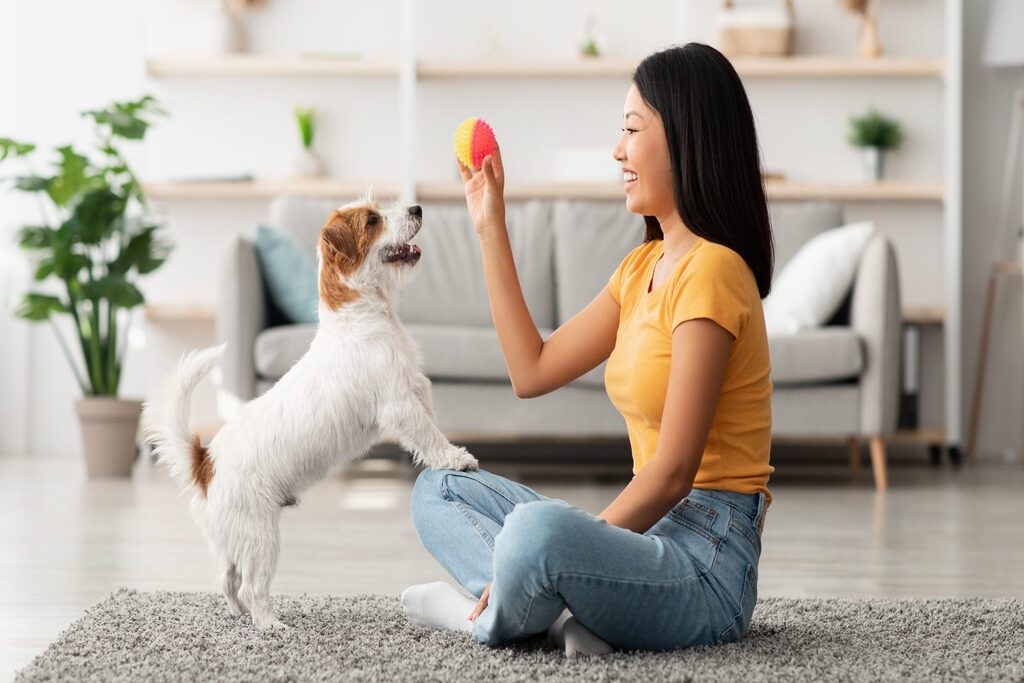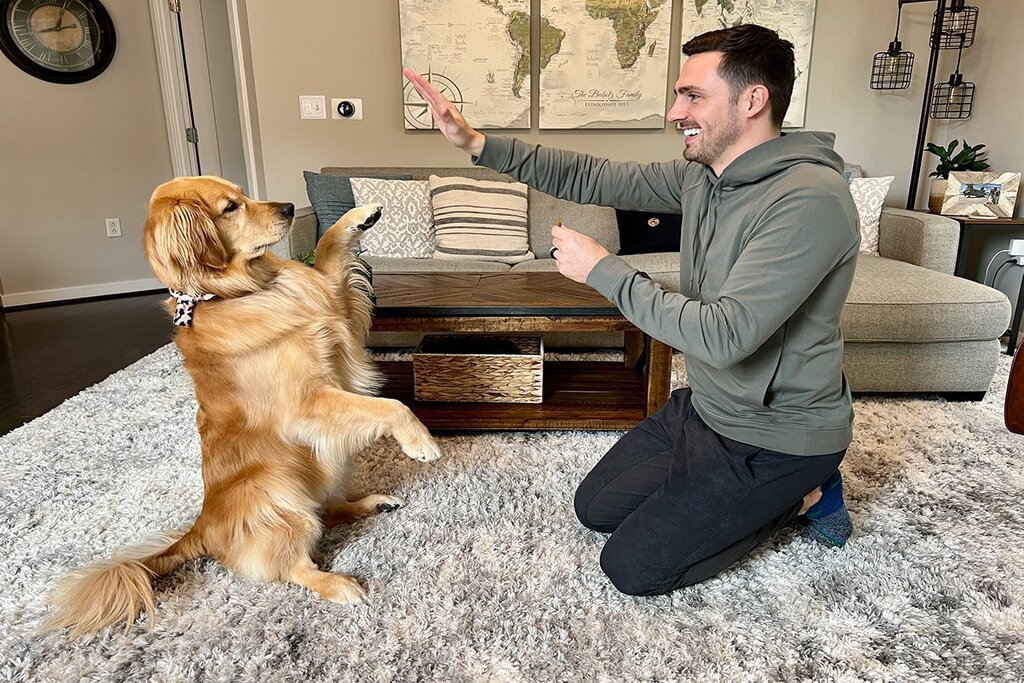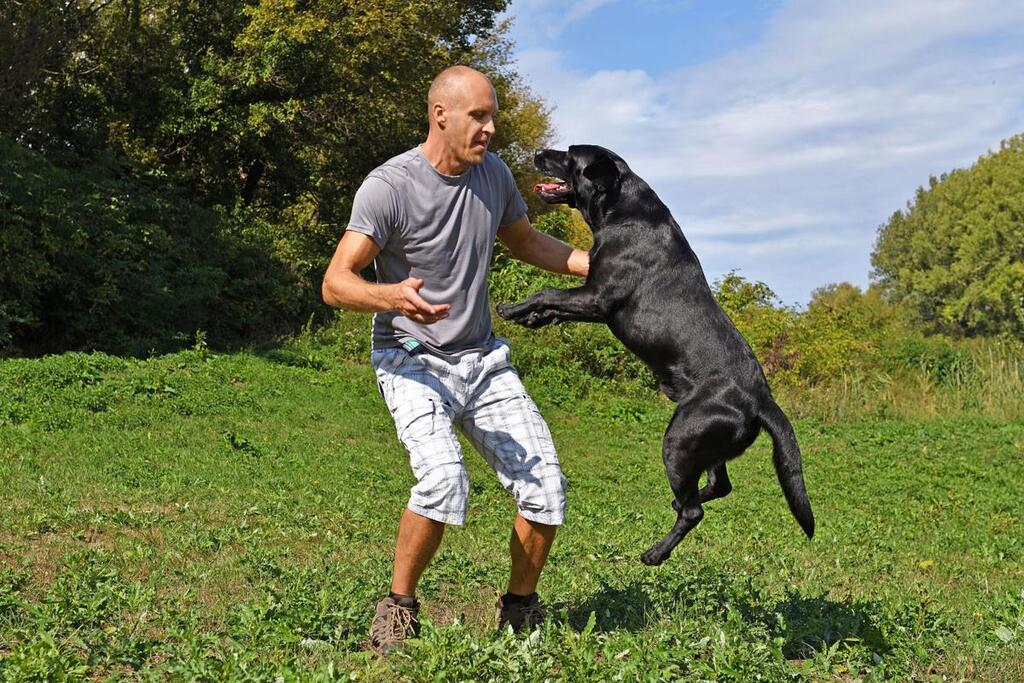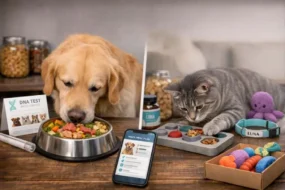
Good pet training relies on clear communication and positive reinforcement. These methods develop a strong bond between pet and owner. Consistency with commands and rewards is key to shaping desired behaviors. Emphasizing routine, patience, and empathetic handling of behavioral issues creates an ideal environment for your furry friend to thrive and learn.
- Establishing Clear Communication
- Positive Reinforcement Training
- Consistency and Patience
- Addressing Behavior Issues
- Building a Trusting Relationship
- Enrichment and Mental Stimulation
- Socialization and Exposure
- Creating a Safe and Positive Environment
- Continuous Learning and Adaptation
- Setting Realistic Expectations
- Understanding Breed-Specific Traits
- Utilizing Training Tools and Aids
- Fostering a Lifelong Learning Mindset
- Avoiding Overwhelm
- Celebrating Small Wins
- Monitoring Progress and Adjusting
Establishing Clear Communication
Clear communication is the cornerstone of successful pet training, just as understanding a dog poop guide is essential for maintaining pet health. Consistent commands and positive reinforcement convey your expectations effectively. Use short, simple commands to avoid confusion and consistently follow through with rewards or consequences. Pets thrive on routine and structure, so clarity from the beginning is essential for a well-behaved companion.
Positive Reinforcement Training

Positive reinforcement encourages desirable behaviors. Rewarding your pet with treats, praise, or play signals which actions are desirable. This method builds trust and respect between you and your pet, resulting in a well-mannered and happy companion. Your pet learns to associate good behavior with positive outcomes, making it more likely to repeat those actions.
Consistency and Patience
Consistency and patience are fundamental in effective pet training. Dogs thrive on routines and predictability. Establish clear rules and adhere to them consistently. This structured environment helps your pet understand what behaviors are expected. Patience is essential, as learning happens over time. Stay calm and persistent. This approach strengthens the bond between you and your pet and creates a positive environment for them to develop into a well-behaved companion. Recognize and reward good behavior to reinforce these lessons and encourage continued obedience.
Addressing Behavior Issues

Handling behavioral problems requires an understanding and problem-solving approach. Identify the root cause of the behavior and adjust training techniques accordingly. Whether dealing with excessive barking, aggression, or separation anxiety, consistent training with positive reinforcement can turn these behaviors around. Consulting with a professional trainer or behaviorist can provide valuable insights and strategies to tackle such issues.
Building a Trusting Relationship
Building a trusting relationship with your pet is essential. This trust is developed through clear communication and consistent positive reinforcement. An understanding and trust-based relationship between pet and owner ensures that training is effective and enjoyable. Use empathy and tailored strategies to address specific behavioral issues. This approach not only improves behavior but also strengthens the bond between you and your pet.
Enrichment and Mental Stimulation
Mental stimulation is crucial for a well-behaved pet. Engage your pet with interactive toys, puzzles, and training exercises that challenge their mind. Regular mental stimulation prevents boredom, which can lead to behavioral issues. Incorporate training sessions into your daily routine to keep your pet engaged and mentally sharp.
Socialization and Exposure
Socialization is a key component of effective pet training. Expose your pet to different environments, people, and other animals. This helps them become well-adjusted and reduces fear and anxiety in new situations. Controlled socialization experiences build confidence and improve overall behavior.
Creating a Safe and Positive Environment
A safe and positive environment is crucial for successful pet training. Ensure your home is pet-friendly and free from hazards. Provide a comfortable space for your pet to relax and feel secure. A positive environment fosters learning and reinforces good behavior.
Continuous Learning and Adaptation
Pet training is an ongoing process. Continuously learn and adapt your training techniques to suit your pet’s evolving needs. Stay updated with the latest training methods and be open to trying new approaches. Every pet is unique, and flexibility in your training approach ensures long-term success.
Setting Realistic Expectations
Set realistic expectations for your pet’s behavior and training progress. Understand that each pet learns at their own pace and may face unique challenges. Celebrate small victories and remain patient during setbacks. Adjust your training goals as needed to ensure a positive and encouraging experience for both you and your pet.
Understanding Breed-Specific Traits
Different breeds have distinct traits and temperaments. Understanding your pet’s breed-specific characteristics can help tailor training methods more effectively. For example, working breeds may need more mental stimulation and physical activity, while companion breeds might thrive on social interaction. Recognizing these traits helps create a more customized and successful training plan.
Utilizing Training Tools and Aids

Various training tools and aids can enhance the training process. Items such as clickers, training collars, and interactive toys can be effective in reinforcing desired behaviors. Use these tools correctly and responsibly to support your training efforts. Proper use of training aids can make the learning process more engaging and efficient for both you and your pet.
Fostering a Lifelong Learning Mindset
Training shouldn’t end once your pet learns basic commands. Fostering a lifelong learning mindset keeps your pet engaged and mentally stimulated. Regularly introduce new commands, tricks, and challenges to keep training fresh and exciting. Continuous learning not only reinforces good behavior but also deepens the bond between you and your pet.
Avoiding Overwhelm
Introducing too many training practices at once can lead to confusion and stress for your pet. Start with the basics and gradually add more commands and techniques as your pet becomes comfortable. Focus on one or two behaviors at a time to ensure clarity and success. This approach helps prevent frustration and fosters a positive learning environment.
Celebrating Small Wins
Acknowledge and celebrate small achievements in your pet’s training journey. Each step forward, no matter how minor, is progress. Positive reinforcement applies to you as well—recognize your efforts and patience. This positive mindset keeps training enjoyable and motivates both you and your pet to keep progressing.
Monitoring Progress and Adjusting
Regularly assess your pet’s progress and adjust your training methods as needed. If a particular technique isn’t working, be flexible and try a different approach. Every pet is unique, and what works for one may not work for another.
Conclusion
Investing time and energy into training your pet is deeply rewarding. It builds a strong bond of mutual respect and trust. With clear communication, positive reinforcement, consistency, and patience, you can mold your pet into a well-behaved, content companion. Effective pet training enhances the quality of life for both you and your furry friend. Make sure you implement all those practices gradually and patiently. Implementing all those practices at one go can be stressful and confusing for you and your pet.
In Case You Missed It!











